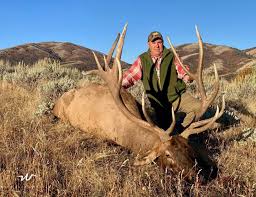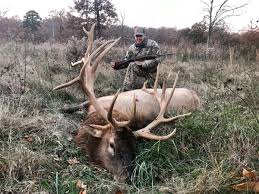Embarking on an elk hunt is a thrilling experience that requires careful planning and preparation. Whether you’re a seasoned hunter or a novice, these tips will enhance your chances of success and ensure a memorable adventure.
1. Research and Understand Elk Behavior
Before heading out, invest time in learning about elk behavior and their seasonal patterns. Elk are highly adaptable animals that vary their movements based on the time of year, weather conditions, and available food sources. Understanding these patterns can help you predict their location. For example, during the rut (mating season), typically in late September to early October, bulls are more vocal and easier to locate.
2. Choose the Right Gear
Selecting the appropriate gear is crucial for a successful elk hunt. Key items include:
- Clothing: Dress in layers to adapt to changing weather. Use moisture-wicking base layers, insulating mid-layers, and waterproof outer layers. Camouflage patterns suited to the terrain can also be beneficial.
- Footwear: Invest in high-quality, waterproof boots with good ankle support. Elk hunting often involves traversing rugged terrain.
- Optics: A good pair of binoculars and a spotting scope can help you locate elk from a distance.
- Weapon: Whether you prefer a rifle, bow, or muzzleloader, make sure it is well-maintained and sighted in. Practice your shooting skills to ensure accuracy.
3. Physical Preparation
Elk hunting can be physically demanding, involving long hikes in steep and rough terrain. Start a fitness regimen months before your hunt to build endurance, strength, and elk hunt guide cardiovascular fitness. Focus on exercises that mimic the conditions you’ll face, such as hiking with a weighted backpack.
4. Scouting and Mapping
Prior to the hunt, spend time scouting the area. Use topographic maps, GPS, and online resources to identify potential hotspots such as feeding areas, water sources, and bedding grounds. Pre-season scouting trips can also familiarize you with the terrain and help you identify elk signs like tracks, rubs, and droppings.
5. Understand Hunting Regulations
Each state has its own regulations regarding elk hunting. Make sure you are aware of the specific rules, including season dates, licensing requirements, and any restrictions on the type of weapon you can use. Abide by all regulations to ensure a legal and ethical hunt.
6. Master Calling Techniques
Elk communicate through various sounds, including bugles, cow calls, and mews. Learning to mimic these calls can attract elk to your location. There are many elk calls available on the market, including diaphragms, bugle tubes, and reed calls. Practice these techniques to make your calls sound realistic.
7. Stay Scent-Free
Elk have a keen sense of smell, making scent control vital. Use scent-free soaps and detergents to wash your clothing and gear. Apply scent-eliminating sprays before heading out, and always hunt with the wind in your face to minimize the chances of being detected.
8. Team Up and Stay Safe
Hunting with a partner can increase your chances of success and enhance safety. Make a plan and stick to it, maintaining communication throughout the hunt. Always carry a first aid kit, navigation tools, and let someone know your hunting location and expected return time.
9. Be Patient and Persistent
Elk hunting requires patience and persistence. It might take days of tracking and waiting to get a clear shot. Stay focused, be prepared to adapt your strategy, and don’t get discouraged by setbacks.
10. Respect the Wildlife and Environment
Always practice ethical hunting. Respect the animals and the environment by following leave-no-trace principles. Take clean shots to ensure a humane kill and make use of the entire animal to honor the elk’s life.
By incorporating these tips into your elk hunting strategy, you’ll be well-prepared for a successful and rewarding hunt. Happy hunting!

